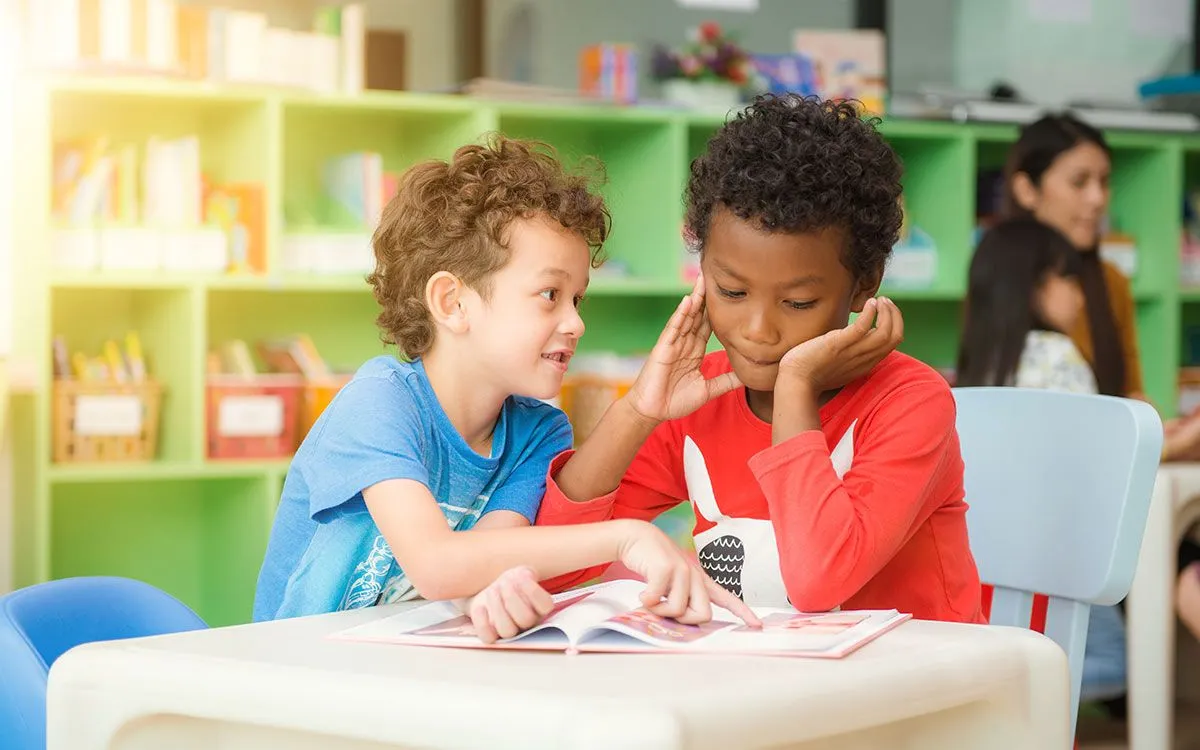FOR AGES 7 YEARS TO 9 YEARS
Image © freepik, under a Creative Commons license.
The present perfect tense is a complicated label for a simple concept that we are all using all the time.
To create the present perfect tense you combine the present form of the verb 'to have' ('has,' for example), with the past participle of the main verb of the sentence ('worked', for example). So, we might have: 'She has worked at the company for a very long time.'
From Year 3 and Year 4 students will begin to get to grips with the different tenses. We have created this resource so that you'll be well placed to answer any questions your child might have as they learn the tenses.
Tenses are how language can be used to show when something occurred and whether or not it is still happening. Before we get to the present perfect form it is useful to have a quick reminder of past tenses and the present verb forms, including the past tense and the simple past.
The simple past tense shows an action that occurred and was completed in the past. 'I went to the shops' is an example.
The simple present refers to actions or conditions happening right now. For example, 'the bath is running.'
The perfect present tense is used to show that an action has taken place once or many times before now.
The past progressive tense's use is to indicate continuous action.

Image © tirachard, under a Creative Commons license.
The perfect present is used when talking about something that happened in the past but is still occurring or has consequences today.
The present perfect is made up of two simple steps. Firstly, 'to have' must be in its present. This is where the 'present' element of the label comes from. So, 'to have' can become 'she has,' 'they have,' 'we have,' or 'I have.' In this way the action or occurrence becomes continuous.
The second step is to combine the present tense of 'to have' with the past participle of the main verb of the sentence. One tip for ensuring the past participle of a verb form in English is that they normally en in '-ed' or 'd'. For example, 'work' becomes 'worked.'
Here are some examples of the present perfect tense form:
He has finished his meal.
They have completed their homework.
She has travelled the world.
They have constructed a bridge.
The present perfect tense can also be used for occurrences that are not specific to a certain point in time. For example, 'I have lost my bag' and 'she has broken her arm'.

Image feelgoodjunkie from Pixabay
The past perfect tense is similar to the present perfect tense except instead of having the verb 'to have' in the present, we have it in the past. So 'to have' becomes 'had,' for example.
But, we still use the past participle of the main verb. So words like 'studied,' 'visited,' and 'booked' are used. Here are some examples:
I had never eaten spaghetti before coming to Italy.
She could not buy anything because she had lost her purse.
He was told off because he had completed the wrong homework.
The past perfect is very similar to the present perfect but shows that an action or occurrence has finished.

Image © Racool_studio, under a Creative Commons license.
In schools, a variety of methods are used to help primary students understand and improve their grammar skills.
Children are learning grammar throughout their time at primary school, beginning with learning to connect two sentences with the conjunction 'and.' By the time they leave Year 6 they have a solid understanding of the various tenses and sentence structures that can be used.
Teachers use a variety of activities, from explaining things on the whiteboard to activities and games. However, it is very common for pupils to struggle with grammar and they often look to parents and carers to support them in their learning.
We all lead such busy lives, often leaving little time to give our children the educational support they might need. However, one of the good things about grammar is that it can be practised in a variety of different ways either with your child or for your child to complete whilst you are busy with other tasks.
From Year 2 onward, parents can use online games to help kids practice grammar and tenses. These vary in difficulty and age range but there are some available that are catered towards those in the early stages of KS2. These games are particularly handy for when you aren't able to give 100% of your attention to your child all the time. Many of these games are really fun to use too!
Another thing that parents often try to do is keep on top of their children's language mistakes when they speak. This is not something that people are keen to do all the time, of course, but occasionally picking up on slight grammatical mistakes can nudge your child in the right direction.
For older kids, why don't you write out a list of sentences using different tenses and ask children to identify which tense is being used in each example? Remember: Practice makes perfect!
Read The Disclaimer
At Kidadl we pride ourselves on offering families original ideas to make the most of time spent together at home or out and about, wherever you are in the world. We strive to recommend the very best things that are suggested by our community and are things we would do ourselves - our aim is to be the trusted friend to parents.
We try our very best, but cannot guarantee perfection. We will always aim to give you accurate information at the date of publication - however, information does change, so it’s important you do your own research, double-check and make the decision that is right for your family.
Kidadl provides inspiration to entertain and educate your children. We recognise that not all activities and ideas are appropriate and suitable for all children and families or in all circumstances. Our recommended activities are based on age but these are a guide. We recommend that these ideas are used as inspiration, that ideas are undertaken with appropriate adult supervision, and that each adult uses their own discretion and knowledge of their children to consider the safety and suitability.
Kidadl cannot accept liability for the execution of these ideas, and parental supervision is advised at all times, as safety is paramount. Anyone using the information provided by Kidadl does so at their own risk and we can not accept liability if things go wrong.
Kidadl is independent and to make our service free to you the reader we are supported by advertising.
We hope you love our recommendations for products and services! What we suggest is selected independently by the Kidadl team. If you purchase using the buy now button we may earn a small commission. This does not influence our choices. Please note: prices are correct and items are available at the time the article was published.
Kidadl has a number of affiliate partners that we work with including Amazon. Please note that Kidadl is a participant in the Amazon Services LLC Associates Program, an affiliate advertising program designed to provide a means for sites to earn advertising fees by advertising and linking to amazon.
We also link to other websites, but are not responsible for their content.
Was this article helpful?



Browse Category



We’ll send you tons of inspiration to help you find a hidden gem in your local area or plan a big day out.



Check your inbox for your latest news from us. You have subscribed to:
Remember that you can always manage your preferences or unsubscribe through the link at the foot of each newsletter.